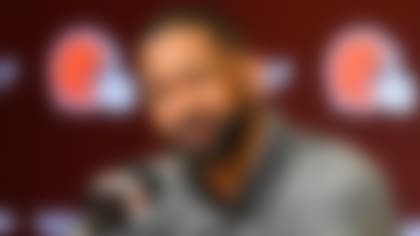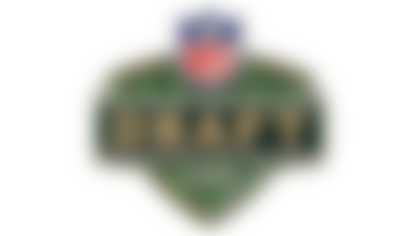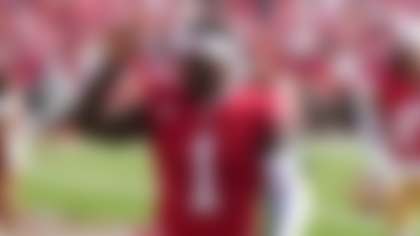Football season is right around the corner! Not only in the NFL, but at the college level, too. As a resident guru of the Saturday standouts, Chad Reuter provides the top draft-eligible college players at each position in a 10-part series. Today's group is the wide receivers.
Wide receiver is the United Nations of football positions.
The expansion of four- and five-receiver sets in today's NFL offenses leads to pass catchers of all sizes, speeds and backgrounds being mined by NFL scouts during the draft process. And the depth of talent throughout the country means that all collegiate levels can be represented in a particular class.
In fact, a higher percentage of wide receivers selected in the top 100 picks over the past decade played college ball outside the "Big Six" football conferences than at any other position. And nearly one in three drafted receivers over that time did not finish their careers in power conferences.
The success of the New York Giants' Victor Cruz (an undrafted UMass alum in 2010 who ranked third in the NFL with 1,536 receiving yards for the Super Bowl champs last season), New Orleans Saints' Marques Colston (Hofstra, seventh-round pick in 2006) and new Tampa Bay Buccaneer Vincent Jackson (Northern Colorado, second-round pick in 2005) shows that scouts will find receivers worth signing, no matter where they attended school. And quarterbacks will find them on the field, regardless of when they were drafted (or, in Cruz's case, signed).
And even receivers from larger programs lacking in size (Wes Welker, Steve Smith, Antonio Brown) or possessing average speed (Colston, Hakeem Nicks) can still become difference makers at the next level if they are NFL-quality in other physical attributes, possess exceptional hands or are savvy route runners.
The 2013 receiver class is quite a melting pot. The typical stars from the Pac-12 and SEC lead the way at the top, but this group also includes talented prospects from Conference USA, the Sun Belt, the WAC and the Football Championship Subdivision's Southern Conference.
Some are tall with strider's speed, others are short and quick. But all have a chance to make an impact within a year or two of beginning their NFL careers.
*Denotes underclassmen.
1. Keenan Allen, 6-3, 206, California
A smooth outside pass catcher, Allen has the height, speed and ability to win jump balls required of a No. 1 target in the NFL. The first-team All-Pac-12 selection caught most of his 98 passes for 1,343 yards and 11 scores in 2011 from lefty quarterback Zach Maynard, who just happens to be his half-brother.
NFL comparison:* Braylon Edwards
2. Robert Woods, 6-1, 190, USC
The 2011 Biletnikoff Award finalist racked up big numbers (111 catches, 1,292 yards, 15 touchdowns) with quarterback Matt Barkley, thanks to his foot quickness and burst after the catch. If he wants to be the top receiver in this group, though, he must catch the ball more consistently downfield and the right ankle that bothered him last year must finally heal.
NFL comparison:*Reggie Wayne
3. Justin Hunter, 6-4, 200, Tennessee
Tennessee's tall strider looked to be on his way to a breakout year in 2011 (17 catches, 314 yards, two touchdowns in just over two games) before tearing his left ACL. But he showed enough vertical ability in that abbreviated season, along with his Freshman All-SEC season of 2010, to sincerely whet the appetite of NFL teams looking for a big-play receiver.
NFL comparison:* Roy Williams
4. Da'Rick Rogers, 6-3, 208, Tennessee
Rogers is a physical specimen with strong hands who overpowered defenders in his routes and after the catch on his way to second-team All-SEC status in 2011 (67 catches, 1,040 yards, nine TD). But he has shown immaturity off the field -- a definite concern for NFL teams.
NFL comparison:*Greg Little
5. Aaron Dobson, 6-3, 204, Marshall
The most promising receiver prospect at Marshall since Randy Moss, Dobson caught 12 touchdown passes in 2011 and made national headlines with a ridiculous one-handed catch against East Carolina. Dobson might not have Moss' raw talent, but still ranks among the best receivers in the class due to those strong hands and his NFL size and speed.
NFL comparison:Sidney Rice
6. Josh Boyce, 5-11, 203, TCU
Boyce's average height won't impress scouts, but the quickness and strength that make him a playmaker at the college level (998 receiving yards, nine touchdowns in 2011) should allow him to threaten NFL defenses both inside and outside.
NFL comparison:* Devery Henderson
7. Tavon Austin, 5-9, 174, West Virginia
Don't blink when Austin has the ball in his hands, as his elite acceleration helped him lead the FBS in all-purpose yards (1,186 receiving, 182 rushing, 1,207 on kick and punt returns) and score 11 times in 2011. Don't be surprised if he turns out to be a playmaker on offense and special teams in the NFL despite his slight build.
NFL comparison:Dexter McCluster
8. Marcus Davis, 6-4, 228, Virginia Tech
This former quarterback has an elite combination of size and speed, but has only flashed those skills so far with the Hokies (30 catches, 510 yards, five touchdowns in 2011). Successfully stepping into a starring role with the Hokies in 2012, with the help of junior quarterback Logan Thomas, should shoot Davis up draft boards in a hurry.
NFL comparison:Marques Colston
9. Denard Robinson, 5-11, 195, Michigan
If the star dual-purpose quarterback (7,621 yards, 68 touchdowns rushing and passing over the past two years) proves too erratic a passer to follow Seneca Wallace's path to the pros, Robinson could work himself into a slot receiver or hybrid running back/receiver and return specialist role, thanks to his elite straight-line speed and elusiveness in the open field. Though no one knows as of yet if he is capable of catching an NFL ball consistently. If he wants to make the transition, and shows strong hands in workouts, the sky is the limit on his draft stock.
NFL comparison: Antwaan Randle El
10. Quinton Patton, 6-2, 195, Louisiana Tech
A first-team All-WAC pick in 2011, Patton accumulated 1,202 yards and 11 touchdowns in his first year with the Bulldogs after transferring from Coffeyville Community College. He possesses the hands, route-running skills and toughness to be a very good starter.
NFL comparison:Steve Johnson
11. Terrance Williams, 6-3, 205, Baylor
Without Heisman Trophy winner Robert Griffin III throwing him the ball in 2012 (he posted 957 receiving yards and 11 scores last season), Williams must use his size, quick feet and speed to be a playmaker for the Bears. He must prove to scouts that he can execute the entire route tree, not just be the guy you tell to "go deep."
NFL comparison:Jacoby Jones
12. Javone Lawson, 6-1, 183, Louisiana-Lafayette
Lawson could be the third straight All-Sun Belt receiver to land in the third round of the NFL draft. Scouts like his reliable hands and understand his skinny build belies the strength after the catch showcased throughout the 2011 season (1,092 receiving yards, including 193 in the team's New Orleans Bowl win over San Diego State).
NFL comparison:Emmanuel Sanders
Play fantasy football on NFL.com
Your fantasy team plays in the NFL, so why don't you? Sign up to play the NFL's official free fantasy football game.
13. Cobi Hamilton, 6-3, 209, Arkansas
Now that three of his Razorback wideout teammates are in the NFL, Hamilton must use his size and hands for increased production as a senior. He had 542 receiving yards and four touchdowns on a prolific Razorbacks offense in 2011, but now it's his chance to truly shine. He also must prove he possesses the speed and agility to win one-on-one battles against pro-caliber cornerbacks.
NFL comparison:Eric Decker
14, Aaron Mellette, 6-4, 212, Elon
The Phoenix have averaged 39 pass attempts a game over the past three years, partially because of Mellette's talents. Despite average straight-line speed, the ultra-productive target led the FCS with 113 receptions and 1,639 receiving yards in 2011. Mellette uses his strong hands and NFL-type body to win battles (before and after the catch) against any defender lined up across from him.
NFL comparison:Mike Williams (Syracuse/Tampa Bay)
Follow Chad Reuter on Twitter @ChadReuter












